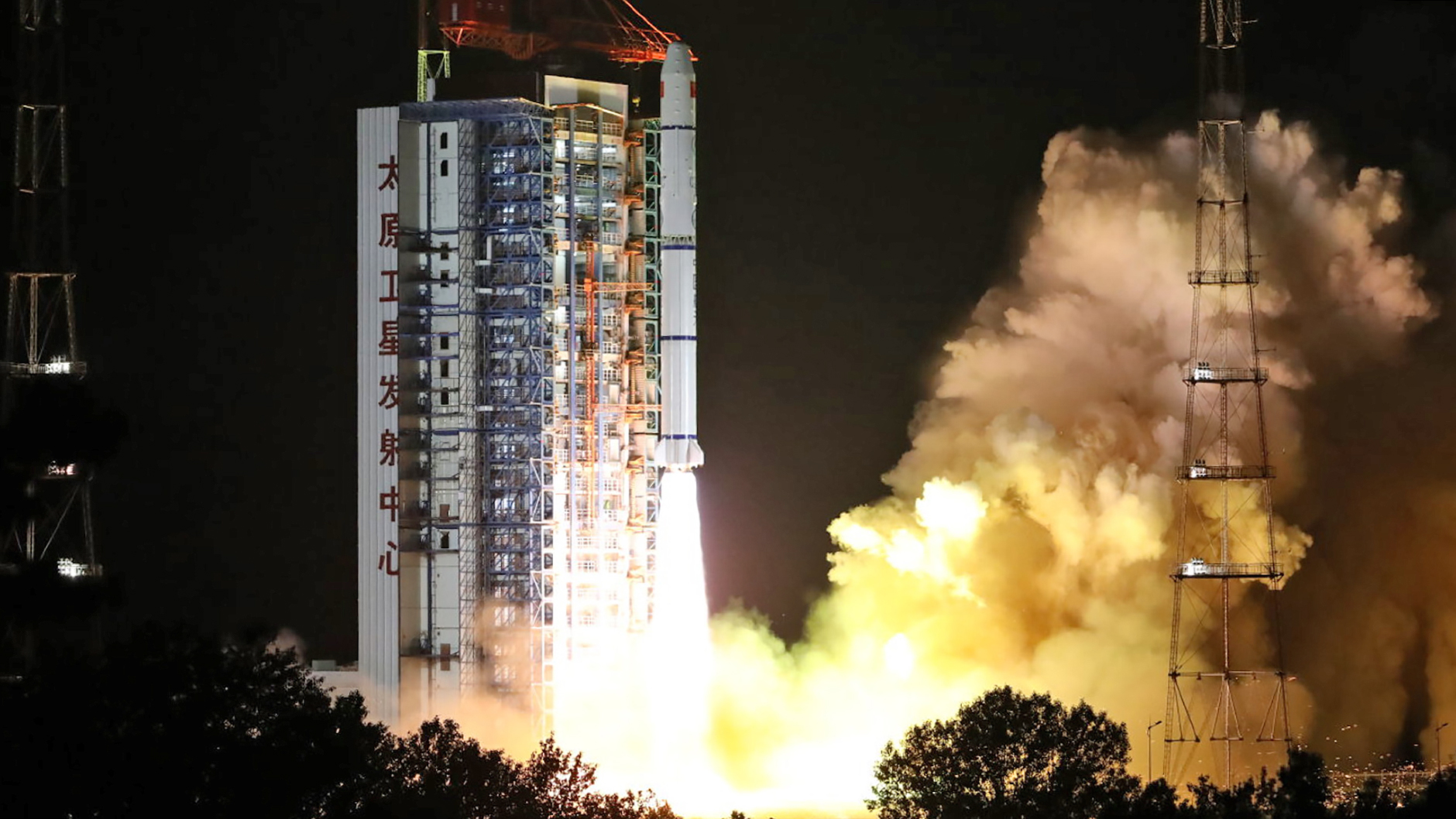A report from Financial Times’ Demetri Sevastopulo and Kathrin Hille states that China has tested a nuclear-capable hypersonic glide vehicle that goes into space and traverses the globe in an orbital-like fashion before making its run through the atmosphere toward its target. There would be huge implications if such a system were to be operationalized, and according to this story, which says it talked to five officials confirming the test, the U.S. government was caught totally off-guard by it.
The trial flight is said to have occurred around August, with the boost-glide vehicle being lifted into space by a Long March 2C rocket. The launch of the rocket, the 77th of its kind, was undisclosed by Beijing, while the 76th and 78th were—the latter of which occurred in late August. The Financial Times says that the tested hypersonic glide vehicle missed its target by a couple of dozen miles, but that is hardly reassuring considering the capabilities that are apparently in development here.
The foundation of this Cold War-era concept is commonly referred to as a Fractional Orbital Bombardment System, or FOBS, but instead of carrying a traditional nuclear-armed reentry vehicle, this Chinese system would carry a hypersonic glide vehicle that would possess immense kinetic energy upon reentry. As such, it could make a very long maneuvering flight through the atmosphere at very high speeds to its target.
The FOBS concept has long been a concern because of its potential to bypass not just missile defenses, but even many early warning capabilities. Compared to a traditional intercontinental ballistic missile (ICBM), a FOBS can execute the same strikes but from highly unpredictable vectors. Range limitations also become a non-factor and the timing of an inbound strike is also far less predictable. But at least with a traditional FOBS ballistic missile system, some sort of projections could be made if the mid-course “orbital” vehicle can be tracked, although that could still be a real challenge.
That is not the case at all with a hybrid design like the one being claimed to have been tested here, which would be totally unpredictable.

The maneuvering hypersonic glide vehicle, descending from high-altitude at extreme speed, could travel thousands of miles to its target, which can be totally offset from a normal ballistic track. Complicating things more, these systems can attack from the south pole, not just the north where most of America’s ballistic missile early warning, tracking, and defensive apparatus is focused. Intercepting such a system would also be very challenging, especially considering U.S. mid-course intercept capabilities are focused on traditional ballistic missile flight profiles, which fly more of a parabolic trajectory and have generally known ranges of each stage of flight.
With a glide vehicle end-game delivery system paired with a FOBS, its vehicles can enter the atmosphere beyond the range of an interceptor’s exo-atmospheric mid-course kill envelope, with the glide vehicle weaving its way through the atmosphere to its final target. Traditional surface-based radar systems’ line of sight is also significantly reduced as the hypersonic glide vehicle travels in the atmosphere. Paired with the extreme speeds involved, this can make these systems nearly useless at providing any details regarding the impending attack.
Hypersonic glide vehicles themselves are also very tough to kill with no real defense against them available at this time. Elaborate defensive concepts are in the works, but their effectiveness will depend on just how fast these vehicles are traveling, their maneuverability, density in numbers, what third-party sensors are available to help in generating an engagement solution, and more. A hypersonic glide vehicle with the kinetic energy in its favor from an orbital-like delivery would likely be the very hardest to kill.
As we have repeatedly noted, the Financial Times also recognized the eyebrow-raising comments by U.S. Department of Defense officials recently on potential “non-traditional” delivery systems that could bypass America’s strategic defenses:
Last month, Frank Kendall, US air force secretary, hinted that Beijing was developing a new weapon. He said China had made huge advances, including the “potential for global strikes . . . from space”. He declined to provide details, but suggested that China was developing something akin to the “Fractional Orbital Bombardment System” that the USSR deployed for part of the Cold War, before abandoning it.“ If you use that kind of an approach, you don’t have to use a traditional ICBM trajectory. It’s a way to avoid defenses and missile warning systems,” said Kendall.
In August, General Glen VanHerck, head of North American Aerospace Defense Command, told a conference that China had “recently demonstrated very advanced hypersonic glide vehicle capabilities”. He warned that the Chinese capability would “provide significant challenges to my Norad capability to provide threat warning and attack assessment”.
There is no shortage of concerns about China’s nuclear buildup within the DoD, and like Moscow, it’s only logical that Beijing would invest in delivery systems that circumvent U.S. early warning and defensive capabilities. The idea that at least some of the hundreds of supposed silos out in the Chinese desert being built to house new ballistic missiles could one day be armed with a weapon like this is very concerning. It also could be yet another major driver behind the Pentagon’s push to deploy a whole new space-based early warning and tracking system for hypersonic and ballistic missiles, including one capable of “cold layer” tracking of missiles in their midcourse stage of flight.
That layer would be absolutely essential in trying to defend against a FOBS, that is if a defense at all is actually feasible or even strategically sound. We are not talking about a rogue state here with a few advanced ballistic missiles. China would be able to deploy dozens or even hundreds of these at once. At a certain point, kinetic defenses against such a capability become a losing proposition and a very costly one at that.
Still, this was an early test aboard a full-on rocket used for traditional space access missions. It will take China some time to perfect such a system and package it in a quickly deployable militarized configuration. Major thermal and ablative issues also must be overcome, among others, but it’s not like China hasn’t been working diligently in the hypersonic boost-glide vehicle realm for many years.
Regardless, if this report ends up being fully accurate, one thing is likely: New calls for hugely expensive missile defense capabilities will be ringing loud and often on Capitol Hill, as well as demands to do whatever possible to bring China to the bargaining table in hopes of obtaining some type of strategic arms limitation treaty.
We will continue to update this story as more emerges, but for now, make sure you read the Financial Times’ excellent original report here.
You can find our continuing coverage of this story, which now includes a questionable denial from the Chinese government, here.
Contact the author: Tyler@thedrive.com
